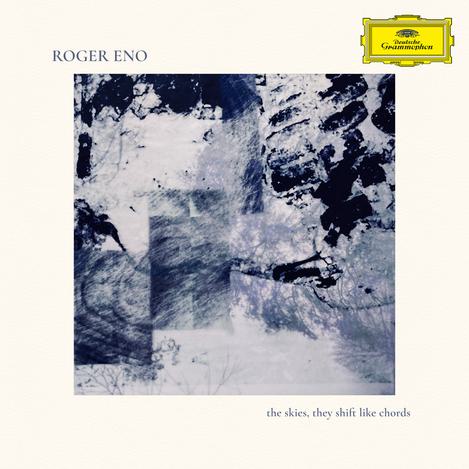Roger Eno reflects on an uncertain future on The Skies, They Shift Like Chords
"The Skies, They Shift Like Chords"

The most successful so-called “pastoral” classical work has always been that which avoids drifting into the musical equivalent of washed-out, insipid watercolours, and instead presents the range of the vibrant natural environment, encompassing the idyllic and the fearful.
Thus, Beethoven’s Sixth has a violent storm as its fourth movement. Vaughan Williams’s Third was composed during and just after the Great War, and its evocation of fields was initiated not by the composer’s affection for English country meadows but by the blood and mud of Flanders. Roger Eno’s latest, his second for Deutsche Grammophon, is inspired by his East Anglian world, and it does suggest the variety of rural magnificence, but also conveys, through its darker passages, the ever-growing threat of climate change degrading and, maybe, ultimately destroying the beauty that has evolved over centuries.
Tracks began as improvised sketches, built up from Eno’s piano foundation, and mainly developed with classical instruments and some sparse electronica. It’s a thoughtfully sequenced album, with Eno’s piano having a delightful clarity throughout. If at times the record’s character is mournful, it is certainly never lachrymose; and, indeed, there are brief passages of silence, as in “Mind the Gap”, that only serve to accentuate the serious of the notion of encouraging the listener to reflect on the precariousness of so much of the natural world in our time.
The string section, drawn from some of Berlin’s finest orchestras, brings a full though never lush sound, and Christian Badzura’s mixing in tracks such as “Tidescape” is masterly in its balancing some sweeping sonics that could otherwise have seemed excessive or indulgent.
The contrasting solo piano in “That Which Is Hidden” has a gorgeous resonance, illustrative of the care Eno takes to prevent the album becoming a narrowly focused lament. Indeed, a characteristic of this release is the subtlety of shift of mood, often within a single track, as in “Illusion” where the pianistic delicacy gives way to forceful synth chords.
The spectral aspects of remote ruralism are well conveyed in “As Above and Below (Crepuscular)” with a suggestion, through the bass notes in particular, of the wyrd-elemental, all the more successfully achieved through the sense of orchestral restraint rather than emphatic statement, a stylistic feature also evident in “Strangely, I Dreamt”, with a glorious brief vocal from daughter Cecily Eno.
A record that could have been merely an ecological threnody is, instead, a beautiful reflection on the here, the now, and an uncertain future.
Get the Best Fit take on the week in music direct to your inbox every Friday

Tunde Adebimpe
Thee Black Boltz

Julien Baker & TORRES
Send A Prayer My Way

Bon Iver
SABLE, fABLE





